- Home
- Bryce Courtenay
Solomon's Song
Solomon's Song Read online
SOLOMON’S SONG
Bryce Courtenay is the bestselling author of The Power of One, Tandia, April Fool’s Day, The Potato Factory, Tommo & Hawk, Jessica, Solomon’s Song, A Recipe for Dreaming, The Family Frying Pan and The Night Country. He was born in South Africa, is an Australian and has lived in Sydney for the major part of his life.
BOOKS BY BRYCE COURTENAY
The Power of One
Tandia
April Fool’s Day
A Recipe for Dreaming
The Family Frying Pan
The Night Country
Jessica
The Australian Trilogy
The Potato Factory
Tommo & Hawk
Solomon’s Song
BRYCE
COURTENAY
SOLOMON’S
SONG
McArthur & Company
Toronto
First published in Canada in 2000 by
McArthur & Company
322 King St. West, Suite 402
Toronto, Ontario, M5V 1J2
www.mcarthur-co.com
Copyright © Bryce Courtenay, 1999
All rights reserved. Without limiting the rights under copyright reserved above, no part of this publication may be reproduced, stored in or introduced into a retrieval system, or transmitted, in any form or by any means (electronic, mechanical, photocopying, recording or otherwise), without the prior written permission of both the copyright owner and the above publisher of this book.
National Library of Canada Cataloguing in Publication Data
Courtenay, Bryce, 1933-
Solomon’s song
ISBN: 1-55278-206-9
Title.
PR9619.3.C598S64 2001 823 C2001-901672-7
eISBN 978-1-77087-035-2
For my grandsons
Ben and Jake Courtenay
ACKNOWLEDGEMENTS
One of the advantages of being older is that one has had the good fortune to meet a lot of people who are experts on a great many topics. I never cease to be amazed and gratified by friends and acquaintances who so willingly part with their hard-earned knowledge.
Quite often a younger person, having read one or another of my books, says to me, ‘How do you know all those things, Bryce?’ Well, of course, I don’t. My friends do. Authors steal stuff, most of us have ‘news-stand’ minds, we accommodate knowledge for very short periods.
Here now are some of the generous people from whom I ‘borrowed’ information and who allowed me to appropriate the wisdom I don’t have. I have also included at the end of the book a bibliography of those writers without whose books it would have been impossible to write this one (see A Note on Sources).
To Margaret Gee, my line editor, proofreader, confidante and often fearless critic, my heartfelt thanks for being at my shoulder when I needed help and quiet as a mouse when I didn’t.
To Benita Courtenay, who reads each chapter while it is still warm from my desktop printer and is never afraid to comment usefully, I am, as always, grateful to you.
My admiration and gratitude go to two great professionals, Bruce Gee, who is best described as a polymath, and John Arnold, Deputy Director, National Key Centre for Australian Studies, Monash University, who, assisted by David Green and Robin Lucas, became the mainstay of my research.
It has always been my contention that the historical facts in a work of fiction must be accurate and that readers should be able to rely on them to obtain a knowledge of the times in which the narrative takes place. In this regard Bruce and John and my editor Kay Ronai have done me proud.
I have a special debt of gratitude to Bill Fogarty, Senior Curator – Photographs, Sound and Film at the Australian War Memorial. Bill was with me at Gallipoli and together we covered the battlegrounds where, in a true sense, Australia forged many of those unique elements which make us who we are as a nation today. For the many bottles of cheap and utterly atrocious local red wine shared as we pondered over maps and explanations, for reading and correcting the military detail in this book and for the willingness to help at high speed, I shall be forever grateful to you, Bill, and also to those of your colleagues who worked with you.
There may be some who will disagree with my perspective of Gallipoli and France, but I would be very surprised if Bill Fogarty, Ashley Ekins, Historian, Official History Unit, and Graeme Beveridge, Education Unit, all of the Australian War Memorial, who supplied material and painstakingly detailed my narrative, have got any of the hard facts wrong.
And now for those who helped in a hundred different ways: John Waller, Managing Director of Boronia Travel Centre in Melbourne, who generously allowed me at the last minute to accompany his official tour to Gallipoli. Essie Moses, of Woollahra Library, who never fails me in matters Jewish and others. Owen Denmeade, Dr Irwin Light, Christine Lenton, Sylvia Manning, Sardine, Ethna Gallagher, Alex and Brenda Hamill, Tony Crosby, Danny Persky, Cheryl Bockman, John Robson, Robbee Spadafora for help with jacket designs, Alan Jacobs of Consensus Research, Harry Griffiths for further material and for the good companionship on the Gallipoli tour. To Peter Darnell, who generously allowed me the use of personal family papers and letters concerning his granduncle, Major Aubrey Darnell, who was killed in France in 1918. ETT Imprint, for their kind permission to reproduce Mary Gilmore’s poem ‘Gallipoli’ from Selected Poems (Sydney, 1999). Wilfred Owen’s poem ‘Arms and the Boy’ from War Poems and Others (Random House) was first published by Chatto & Windus. The epigraph to Chapter Seventeen is Rudyard Kipling’s ‘Common Form’, from ‘Epitaphs of the War, 1914–18’. The poem ‘Gallipoli’ on page 573 is by W. S. Pakenham-Walsh, 1916.
Then there are the Mitchell Library, State Library of New South Wales, and the State Library of Victoria, two of the most splendid, resourceful and co-operative institutions in the land, without which this book could not possibly have been contemplated. I thank you for your scholarship, dedication and the many examples of the best possible library practice.
My thanks to my old friends Sir William and Lady Dulcie Keys, who will launch Solomon’s Song and, I know, will do so with great aplomb.
At Penguin Books I thank the staff who support me so generously and those backroom people who quietly make things happen, in particular my gratitude to Ali Watts, Senior Editor, Beverley Waldron, Production Manager, Leonie Stott, Design Manager, and her people in the Design Studio, Ellie Exarchos, designer, you were all inspired.
To Peter Field, Peter Blake and Gabrielle Coyne who are responsible for the marketing and publicity, I know of no publishing house that does it better.
Then there are the Penguins who boss me around, my publishers, Bob Sessions, Julie Gibbs and Clare Forster, with Clare in the hot seat responsible for this book, you have all been patient, supporting and, as always, a delight with whom to work. Clare, I simply couldn’t hope for a better working publisher.
As always, the best is left for last, my editor Kay Ronai. Kay, will you please edit my next book with me? You are simply the best. Absaloodle!
BRYCE COURTENAY
ARMS AND THE BOY
Let the boy try along this bayonet-blade
How cold steel is, and keen with hunger of blood;
Blue with all malice, like a madman’s flash;
And thinly drawn with famishing for flesh.
Lend him to stroke these blind, blunt bullet-leads
Which long to nuzzle in the hearts of lads,
Or give him cartridges of fine zinc teeth,
Sharp with the sharpness of grief and death.
For his teeth seem for laughing round an apple.
There lurk no claws behind his fingers supple;
And God will grow no talons at his heels,
Nor antlers through the thickness of his curl
s.
– Wilfred Owen, 1918
Contents
BOOK ONE
Chapter One: WHAT HAPPENED TO TOMMO
Chapter Two: HINETITAMA
Chapter Three: NEW LIFE AND THE DEATH OF MARY ABACUS
Chapter Four: HAWK, TEEKLEMAN AND HINETITAMA
Chapter Five: HAWK, DAVID AND ABRAHAM SOLOMON
Chapter Six: THE RETURN OF HINETITAMA
Chapter Seven: HAWK AND DAVID – A FIGHT TO THE DEATH
Chapter Eight: THE SONS AND DAUGHTERS – VICTORIA AND JOSHUA
BOOK TWO
Chapter Nine: BEN TEEKLEMAN
Chapter Ten: THE DEPARTURE
Chapter Eleven: PEREGRINE ORMINGTON – SMITH
Chapter Twelve: THE CALM BEFORE THE STORM
Chapter Thirteen: THE LANDING
Chapter Fourteen: BEN AND COMPANY
Chapter Fifteen: THE ATTACK ON LONE PINE
Chapter Sixteen: JOSHUA, BEN AND SISTER ATKINS
Chapter Seventeen: BEN AND JOSHUA 1916
BOOK ONE
Chapter One
WHAT HAPPENED TO
TOMMO
Sydney 1861
On a dull early morning with the cumulus clouds over the Heads threatening rain, roiling and climbing, changing patterns and darkening at the centres, the incoming tide washes a body onto Camp Cove, a small inner-harbour beach within Port Jackson which is becoming increasingly known as Sydney Harbour.
Paddy Doyle, the shipping telegraph operator stationed at South Head, out with his dog hears its persistent and, what seems to his ear, urgent barking coming from the beach below him. He makes his way down the pathway onto the small jetty to see his black mongrel yapping beside what, even at a distance, is plainly a human body lying high up on the wet sand.
Doyle, a stout man not given to exertion, hesitates a moment, then jumps the eighteen inches from the jetty onto the sand and breaks into a clumsy trot, the sand squeaking and giving way under his boots. Commonsense tells him no amount of hurrying will make a difference, but death has a haste that ignores the good sense of walking slowly on a sultry morning. He is puffing heavily by the time he arrives at the wet bundle of wool and limbs from which trail several long ribbons of translucent iodine-coloured seaweed.
Immediately he sees that those parts of the body not protected by clothing are badly decomposed and much pecked about by gulls, crabs, sea lice and other scavengers of the deep. But not until he comes right up to it does he realise the body is missing a head.
The neck of the dead man protrudes from a dark woollen coat, a grotesque stump, ragged at the edges, torn about by the popping mouths of countless small fish. It is an aperture made less grisly by the cleansing effect of the salt water but more macabre by its bloodless appearance. It looks like the gape of some prehensile sea plant designed to trap and feed on small fish and tiny molluscs rather than something made of human flesh and blood.
Paddy, an ex-convict, brought to New South Wales on the barque, Eden, the last transport of convicts to Sydney in November 1840, thinks of himself as a hard man. But twenty years of half-decent living have increased the size of his girth and heightened his sensibilities and he vomits into the sand.
After a fair endurance of spitting and gagging he rinses his mouth in the salt wash and stands erect again, kicking the sand with the toe of his right boot to cover the mess he’s made at his feet.
The sun has broken through a break in the clouds and almost immediately blowflies buzz around the corpse. A sickly stench starts to rise from the body, but with his belly emptied of his breakfast gruel, Doyle is now better able to withstand the smell and he squats down to make a more thorough examination.
A narrow leather thong around the base of the headless neck cuts deep into the swollen flesh and disappears inside the neck of a woollen vest. Doyle, reverting to his darker instincts, tugs tentatively at the cord. At first there is some resistance, then a small malachite amulet, a Maori Tiki, is revealed.
Doyle, like all past convicts, is deeply superstitious and is alarmed by the presence of an amulet known to ward off evil spirits and put a curse on those who harm its wearer. He hurriedly tucks it back under the wet vest, afraid now even to have touched it. Without thinking, he rubs the palm of the offending hand in the wet sand to cleanse it, then crossing himself he mutters, ‘Hail Mary, Mother of God, protect me.’
The body is that of a white male of unusually small stature. The fingers of both his hands are clenched to form puffy, clublike fists. Whether from the sudden heat of the sun or the drying out of the corpse, the right hand begins to open and Doyle observes that the nails have continued to grow after death and are deeply embedded into the fleshy upper part of the dead man’s palm. As the fingers unlock and open there is no sign of blood oozing from the fissures the nails have made. Each finger now wears a hooked talon with the finger pads puckered and raised from the immersion in sea water, so that the skin surface seems to be covered by nests of tiny white worms.
The nails are smooth and clean with no cuts or scars nor is there any permanently ingrained dirt etched into the lines on the palms to indicate a man accustomed to physical work. The skin on his arms is bluish-white from the sea water, but shows no signs of having ever been exposed to the sun. ‘Some sort of toff,’ Doyle thinks, ‘no doubt up to no good and come to a sticky and untimely end, good riddance. Still an’ all, choppin’ off his ’ead’s goin’ a bit bloody far!’
Later, when he has pulled off his boots and placed them on the stone steps of his hut to dry and dusted the sand from his feet, he telegraphs Sydney to report the headless corpse. Then, in what Paddy thinks is an amusing appendage to his message, he taps out, Best get a move on it don’t take long for them blowflies to lay their maggot eggs.
Two hours later, with the threatening clouds now well out to sea and the sun hot as hades in a clear blue sky, a steam pinnace from the police mooring at Circular Quay with two police constables aboard puffs up to the Camp Cove jetty to claim the body for the Pyrmont morgue.
While searching the corpse, the morgue attendant, observed closely by Senior Detective Darcy O’Reilly of the Darlinghurst Police Station, discovers a small leather wallet inside the jacket. It contains four pounds and several personal calling cards which identify the headless man as Tommo X Solomon.
Detective O’Reilly immediately sends a constable to Tucker & Co. to inform Hawk Solomon that he is required at the city morgue to identify what may be the remains of his brother.
Hawk, at Mary’s instigation, had reported Tommo missing in case any of Mr Sparrow’s lads might have seen him entering his lodgings on the night of Maggie’s death and declared his presence to the police.
A further search of the victim’s clothing reveals a deck of DeLarue cards, the kind generally used by professional gamblers of a superior status. Finally, a gold hunter watch, with the ace of spades enamelled on its outer lid and a sovereign hanging from its fob chain, is discovered in a buttoned-down pocket of his weskit. It has stopped at twenty minutes past ten o’clock. Senior Detective O’Reilly writes this down as the presumed time of death and then pockets the watch. The corpse is left clothed for the pathologist to examine and is lifted onto the zinc dissecting table in preparation for the autopsy by the Chief Government Medical Officer, William McCrea M.D., who will closely examine the clothes before removal, noting any tears or stains that may help to define the method of death.
Conscious of the corpse’s advanced state of decomposition Dr McCrea loses no time presenting his findings to the coroner, Mr Manning Turnbull Noyes, known in the magistrates courts as M. T. Noyes and by the hoi polloi as ‘Empty Noise’.
The hearing and its immediate aftermath is best summed up by the following day’s Sydney Morning Herald report on the murder by its popular senior crime reporter, Samuel Cook. Although Mr Cook’s name is not used in the paper his style is easily recognised by his many readers who know him for his fearless reportage. He enjoys their respect for his ability to ask awkward
questions which have a habit of greatly embarrassing nobs and government officials of every rank. Cook has even been known to take on the governor when a wealthy merchant of dubious reputation was included in the Queen’s Honours List. There are some who believe he wouldn’t back down to the young Queen Victoria herself.
Samuel Cook is the scourge of the police force, in particular of Senior Detective Darcy O’Reilly. And while every magistrate in New South Wales, given half a chance to nobble him, would cheerfully sentence the Sydney Morning Herald reporter to a ten-year stretch in Darlinghurst, it is Noyes who would call in the hangman. Like O’Reilly, M. T. Noyes is a special target for his remorseless and acerbic pen.
* * *
HEADLESS BODY WASHED UP ON CAMP COVE BEACH
A special report.
The headless body of a white man thought to be that of Mr Tommo X Solomon was discovered yesterday washed up on the beach by Mr Paddy Doyle stationed at the Camp Cove telegraph office.
Mr Doyle reported that he had initially been alerted by the unusual barking of his dog and had walked down to the beach to investigate, thinking perhaps a seal had come ashore on the rocks at the far side of the beach as they occasionally do at this time of the year.
Upon discovering the murder victim Mr Doyle lost no time alerting the authorities and the body, sans head, was recovered by the police some hours later and taken to the city morgue at Pyrmont.
The investigation into the murder is under the direction of Senior Detective Darcy O’Reilly of Darling-hurst Police Station.
Dr William McCrea M.D., Chief Government Medical Officer, successfully applied to the magistrates court at Darlinghurst to submit his findings immediately to the coroner, Mr M. T. Noyes, citing the humid and inclement weather and the decomposed nature of the corpse. Permission was granted by the stipendiary magistrate and the inquest was held late yesterday afternoon.

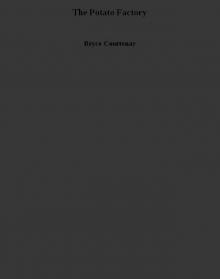 The Potato Factory
The Potato Factory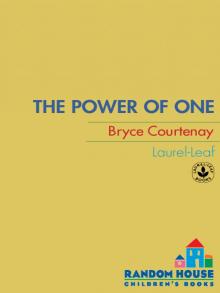 The Power of One
The Power of One Jack of Diamonds
Jack of Diamonds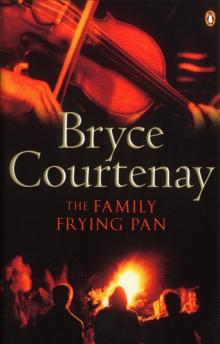 The Family Frying Pan
The Family Frying Pan April Fool's Day
April Fool's Day Smoky Joe's Cafe
Smoky Joe's Cafe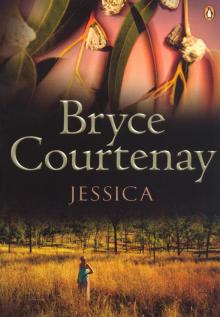 Jessica
Jessica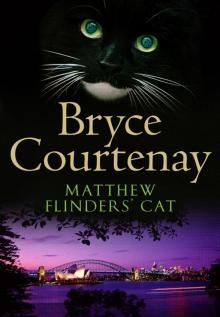 Matthew Flinders' Cat
Matthew Flinders' Cat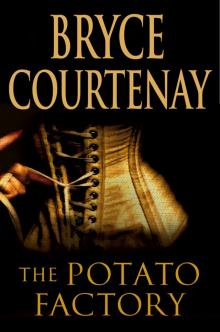 Potato Factory
Potato Factory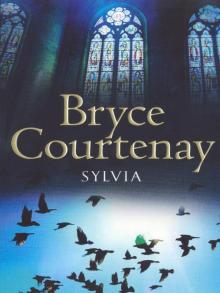 Sylvia
Sylvia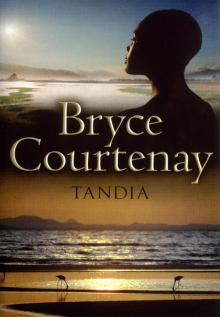 Tandia
Tandia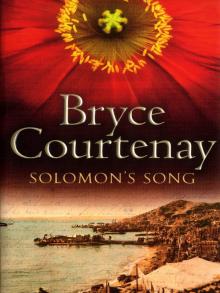 Solomon's Song
Solomon's Song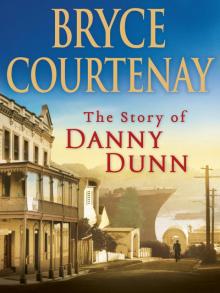 The Story of Danny Dunn
The Story of Danny Dunn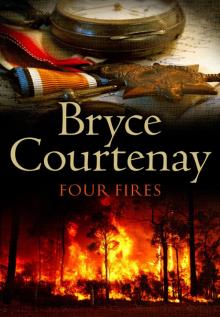 Four Fires
Four Fires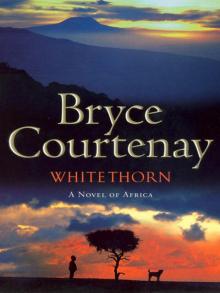 Whitethorn
Whitethorn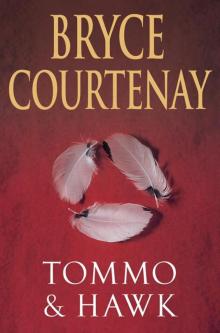 Tommo and Hawk
Tommo and Hawk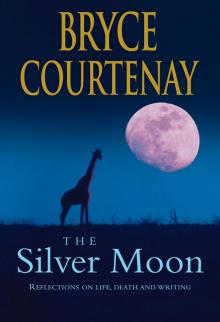 The Silver Moon
The Silver Moon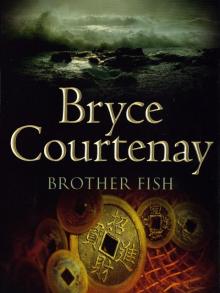 Brother Fish
Brother Fish FORTUNE COOKIE
FORTUNE COOKIE The Persimmon Tree
The Persimmon Tree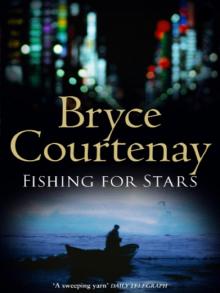 Fishing for Stars
Fishing for Stars